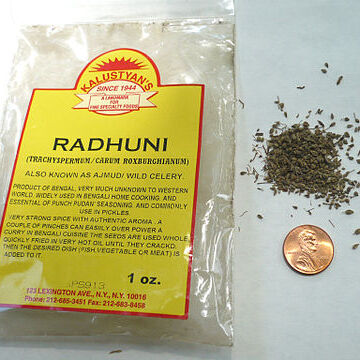Stems 15-90 cm, striate, subglabrous, usually strongly branched. Leaves pinnate; leaflets pinna-tifid to pinnatipartite, extreme segments to 3 mm broad, those of the upper leaves gradually narrower to nearly filiform. Compound umbels terminal and axillary; peduncles 2-8 cm; rays 2-6, 1-2½ cm; pedicels 5-15, 2-6 mm; involucres 2-5, very narrow, finely ciliate; involucels 5-8, very narrow, finely ciliate; Calyx teeth hardly 0.1 mm. Petals nearly 1¼ by ¾ mm, obcordate with inflexed tips, white or greenish white. Mericarps nearly 2½ by ¾ mm, oblong, with very short obtuse spreading hairs.
An annual herb. It is erect and has an aroma. It grows 90 cm tall. The stem is branched. The leaves are alternate and compound. There are leaflets along the stalk. The flowers are in a compound group in the axils of leaves or at the top of the plant. The fruit is flattened and splits open into 2 one seeded sections.

